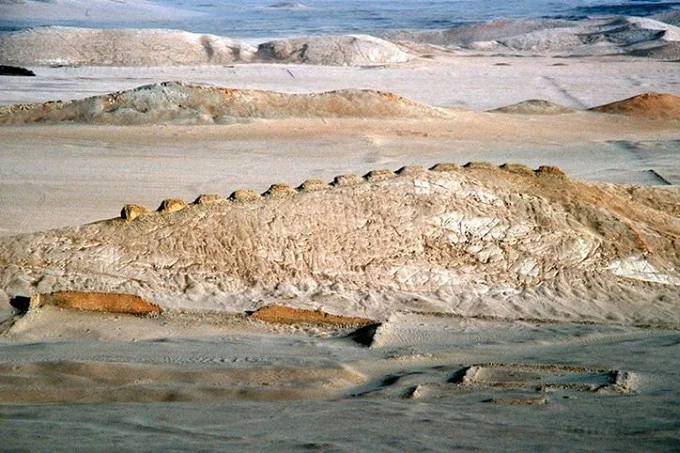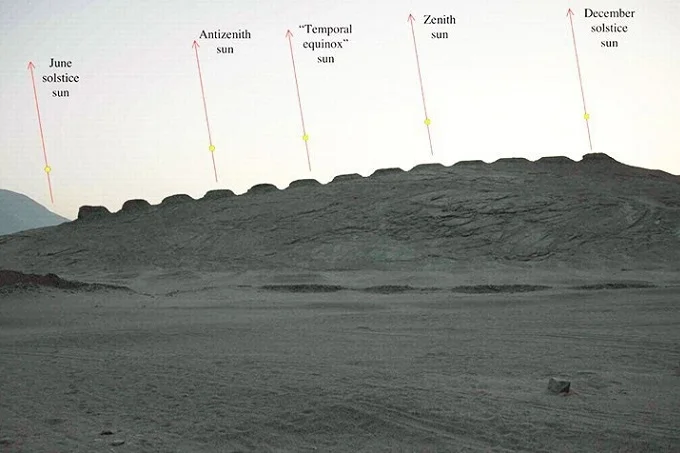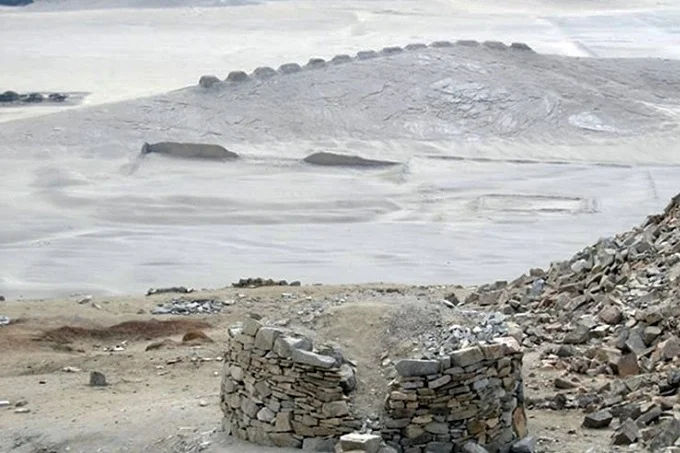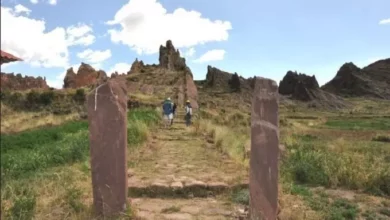What are the secrets revealed by the thirteen towers of Chankillo?

In the Peruvian district of Chankillo of the Ancash department, there was once a mysterious ceremonial complex with an area of 4 square kilometers. It is assumed that it was built in the 4th century BC and was a fortified temple.
The most remarkable part of the complex is a low hill in a deserted area to the east of the temple, on the crest of which, from north to south, there are thirteen almost identical well-preserved towers. Each tower has a pair of stairs leading up.

Towers built of stone vary in height — from two to seven meters. But the five-meter intervals between them are exactly observed. From a distance, they look like the spine of a giant dinosaur sticking out of the sand, with a length of about 300 meters.
Initially, scientists assumed that it was just a protected area surrounded by a triple wall. Because of this, the technique of laying stones, characteristic of fortresses, spoke. But the fortification looks ridiculous from a military point of view because it is almost impossible to protect it: there are many entrances and no water source inside.
In addition, the towers are located a few hundred meters from the top of the hill and are built almost in a straight line.

The objects that Ivan Gezzi, an archaeologist from the Catholic University of Peru, managed to find there in 2000 during excavations confirmed the cult purpose of the center. Therefore, in 2007, archaeologists hypothesized that perhaps it was a place of worship and a kind of solar observatory.
During the summer solstice, which in Peru falls in December, the sun can be observed to the right of the rightmost tower, during the winter, in June, to the left of the leftmost. In the period between them, the sun is visible between the battlements of the towers.
The position of the first tower corresponds to the sunrise on June 21, and the last one – on December 21. It also turned out that towers cast shadows for a reason. Since these are the tropics, they point north for one half of the year and south for the other.
When the sun is at its zenith, the shadows disappear. Perhaps in this way, farmers received important information, for example, about the time of planting seasonal crops.

The decisive discovery was the discovery of a group of buildings located 180 meters to the west. As a result of the excavations, archaeologists discovered not only the buildings themselves but also a long 40-meter stone passage that led from the buildings directly to the western observation point, while no branches or exits from it are provided. To get the latest stories, install our app here

It remains a mystery why there are exactly thirteen towers.
Get $2 daily for reading a story. How does it work? Download the app, sign up, and start cashing out. Click the link




